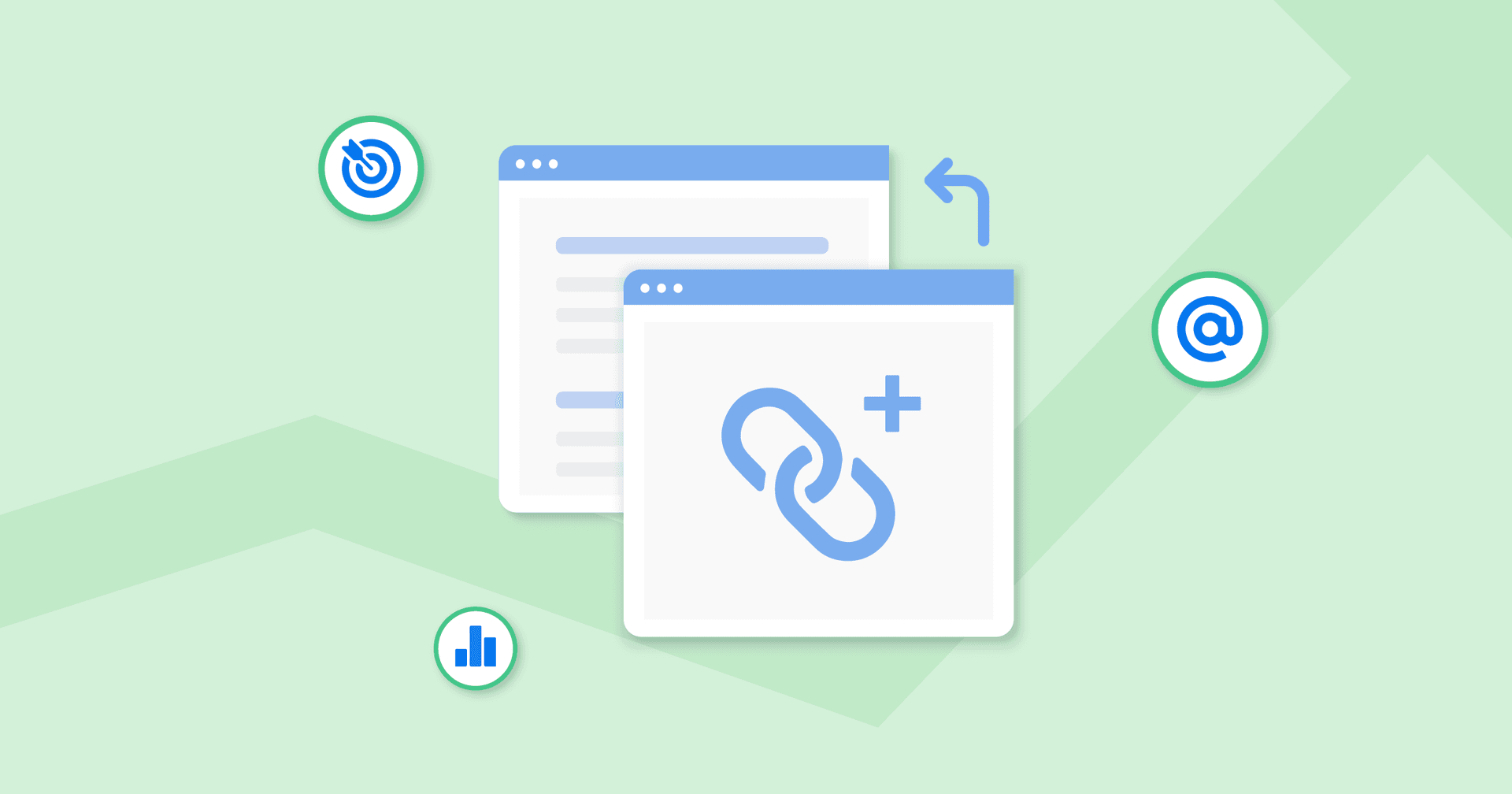Table of Contents
QUICK SUMMARY:
Link building quality back links helps marketing agencies enhance a website's visibility and authority through SEO. This guide addresses common challenges in acquiring those quality backlinks, underscoring the importance of quality over quantity in your strategies. We're offering practical advice for agencies to scale link building tactics, including cost-effective methods, avoiding pitfalls, and leveraging SEO tools for tracking progress.
When it comes to SEO, link building is the secret sauce that spices up a website's visibility and authority. But here's the thing–as marketing agencies hustle to boost a clients' online presence, scaling up those proactive link building efforts isn't exactly a walk in the park. It’s all about quality over quantity.
Building a long-standing and far-reaching reputation in the physical world can be a lifelong feat but when it's right it makes all the difference. Search engines bring that challenge and significance to the digital world.
Beau Walsh, Founder/Creative Director, The Cultural North
One of the most common issues that SEO specialists face is the inability to build quality backlinks as part of an off-page SEO program. It's time-consuming, costly, and difficult to teach to new employees.
Too often, a link building team will focus exclusively on how many links they acquire for a client, but that approach is misguided and misinformed. A quality-focused approach is non-negotiable to secure long-term SEO wins and a great reputation on the SERPs. Yes, a handful of top-notch links does wonders compared to a heap of low-quality ones.
This guide is ideal for agency owners and marketers who have clients interested in SEO and are looking for ways to scale their link building process.
Learn how to build affordable links at scale, overcome potential pitfalls, and increase search engine rankings. We’ve also included a few SEO software tools that are commonly used in the industry for link building to track results and make your life easier.
Why Link Quality Matters More Than Link Quantity
When it comes to SEO, the quality of backlinks significantly overshadows the quantity. This shift towards valuing link quality stems from search engines, like Google and Bing, making their algorithms more sophisticated. They both prioritize the relevance and authority of linking domains over sheer numbers.
Google can't yet make a qualitative decision about a website. It can tell what it's about but it can't tell if it's important or useful just by reading the site. One of the main factors it uses to determine important is backlinks, because these act as "votes of confidence." If it trusts the sites that are linking to you, you get a portion of those referring sites' trust. It's just that simple.
Jens Rhoades, Founder, Floodlight SEO
High-quality links are endorsements from reputable sources, signalling to search engines that the content is valuable, trustworthy, and relevant to the industry. These endorsements are necessary for improving a website's search engine rankings and driving organic search traffic.
On the other hand, a large number of low-quality links (even thousands) harms a site's SEO performance. Search engines, especially Google, have become really good at identifying and penalizing websites that attempt to “cheat” the system through spammy or irrelevant backlinks.
The process of creating high-quality links is undoubtedly more challenging and time-consuming than mass-producing low-quality links but is far more sustainable and effective in the long run, securing better search results. Continue to focus on authenticity, relevance, and authority to secure high-quality backlinks, and you’ll achieve long-term SEO success for your clients.
Challenges in Scaling Link Building Efforts
Scaling link building come with a set of challenges. It requires a tricky balance between many factors to ensure long-term gains. For example, one strategy that might be working for a while could suddenly change, and new resources need to be put in place.
Here are a few challenges to keep in mind:
Managing Link Quality
As agencies scale their link-building efforts, one of the most significant hurdles is preserving the quality of each link. The focus must remain on acquiring backlinks from reputable, relevant sites, which becomes increasingly difficult as the volume of other businesses or agencies looking for links continues to rise.
Backlinks remain the best indicator to Google and other search engines that a webpage is considered important by internet users. Links can be compared to votes, only when it comes to backlinks votes are not equal. The more relevant a website is to the target site and page, the more authority it has and expertise it displays, the more weight the vote gets.
Andy Hill, Managing Director, Distribute Digital
However, this quality control is needed to avoid the negative impact of low-quality links on a website’s search ranking and credibility.
Allocating Resources
Effective scaling requires a team to dedicate the necessary resources, including time, budget, and manpower. Agencies need to continuously optimize their processes to identify and pursue valuable link building opportunities without overspending or overextending their teams.
This optimization typically means an agency needs to invest in tools and technologies that streamline the link-building process, yet keep the cost relatively low for clients.
Achieving Consistency
Consistency in link-building efforts is crucial for sustained SEO success. However, as agencies aim to expand their link-building activities, maintaining a steady pace of high-quality link acquisition may be challenging. Fluctuations in link-building efforts often lead to inconsistent SEO results, making it hard to build and maintain search engine trust.
Measuring the ROI of Campaigns
Quantifying the success of link-building campaigns is complex. Although there are tools that track backlink profiles and their impact on search rankings, directly correlating these efforts to ROI involves navigating a web of metrics, including traffic, conversions, and search visibility.
Any metrics that can't be in some way connected to the deep desires of the client are vanity metrics. Examples would include rank increases on irrelevant keywords (or keywords that no-one searches), the number of backlinks built from spammy sites that don't help SEO, or the number of posts that don't strengthen the client's brand.
Daniel Noakes, Founder, UClimb
As agencies scale up, dissecting these metrics to derive actionable insights and justify the investment in link building becomes increasingly intricate.
How To Scale Link Building Operations
Scaling your link building operations is an important step in the SEO game to enhance a client’s online presence. This expansion requires a thoughtful, strategic approach that balances efficiency with effectiveness. The name of this game is to ensure that quality is never sacrificed for quantity.
Below are some key strategies to effectively scale link building operations:
Determine Your Link Building Strategy
Start by defining clear goals and identifying the types of links that will most benefit the SEO strategy. Whether it’s a guest post or blog post, resource link building, or leveraging influencer partnerships, having a defined strategy helps streamline efforts and focus on tactics that offer the best ROI.
Expand Your Team
Scaling operations often means scaling your team. One thing to consider is hiring freelancers, temporary staff, or interns to handle increased workloads. This approach allows for flexibility and scalability, helping to adjust the workforce based on current link building needs.
Invest In Employee Training
Ensure that all team members (regardless if they’re part-time, remote, or freelancers) receive thorough training on the link building strategy, tools, and best practices. Consistent training ensures quality control and maintains the effectiveness of link building efforts across the board.
Track and Document
Implement in-depth, detailed systems for tracking link building and maintaining specific documentation. This helps in measuring success over time and in ensuring consistency and quality across all campaigns. Use tools and software to automate tracking where possible.
Outsource and Automate Link Building Processes
Identify repetitive or time-consuming tasks that should be outsourced or automated. This could include finding contact information, sending outreach emails, or tracking link placements. Automation and outsourcing significantly increase efficiency, allowing an agency to email hundreds while focus on strategy and relationship building.
Focus on Building Relationships
Even as you scale, the importance of personal relationships in link building cannot be understated. Continue to invest time in building and nurturing relationships with bloggers, industry experts, and website owners. These relationships often lead to the most valuable and sustainable link opportunities.
Evaluate, Iterate, and Optimize
Regularly review your link building strategy and performance. Analyze what’s working and what’s not, then iterate and optimize the approach accordingly. Continuous improvement is key to scaling effectively and maintaining the quality of link building campaigns.
Scaling link building operations involves a lot more than just increasing the number of links built. If you’re serious about scaling, you’ll need a strategic, organized approach to ensure that growth is sustainable and effective.
SEO Software Tools To Track Link Building Success
One of the most critical aspects of providing a link building service is tracking and measuring the success of efforts. Without SEO tools you're missing out on valuable insights and opportunities for building links. Here is our list to help you get started:
1. AgencyAnalytics
AgencyAnalytics makes SEO reporting easy. With over 80 marketing integrations, including Google Search Console, agencies connect all of their client’s platforms in one, convenient location. Not to mention, the solution also offers a full suite of SEO tools, including a rank tracker and backlink monitor.
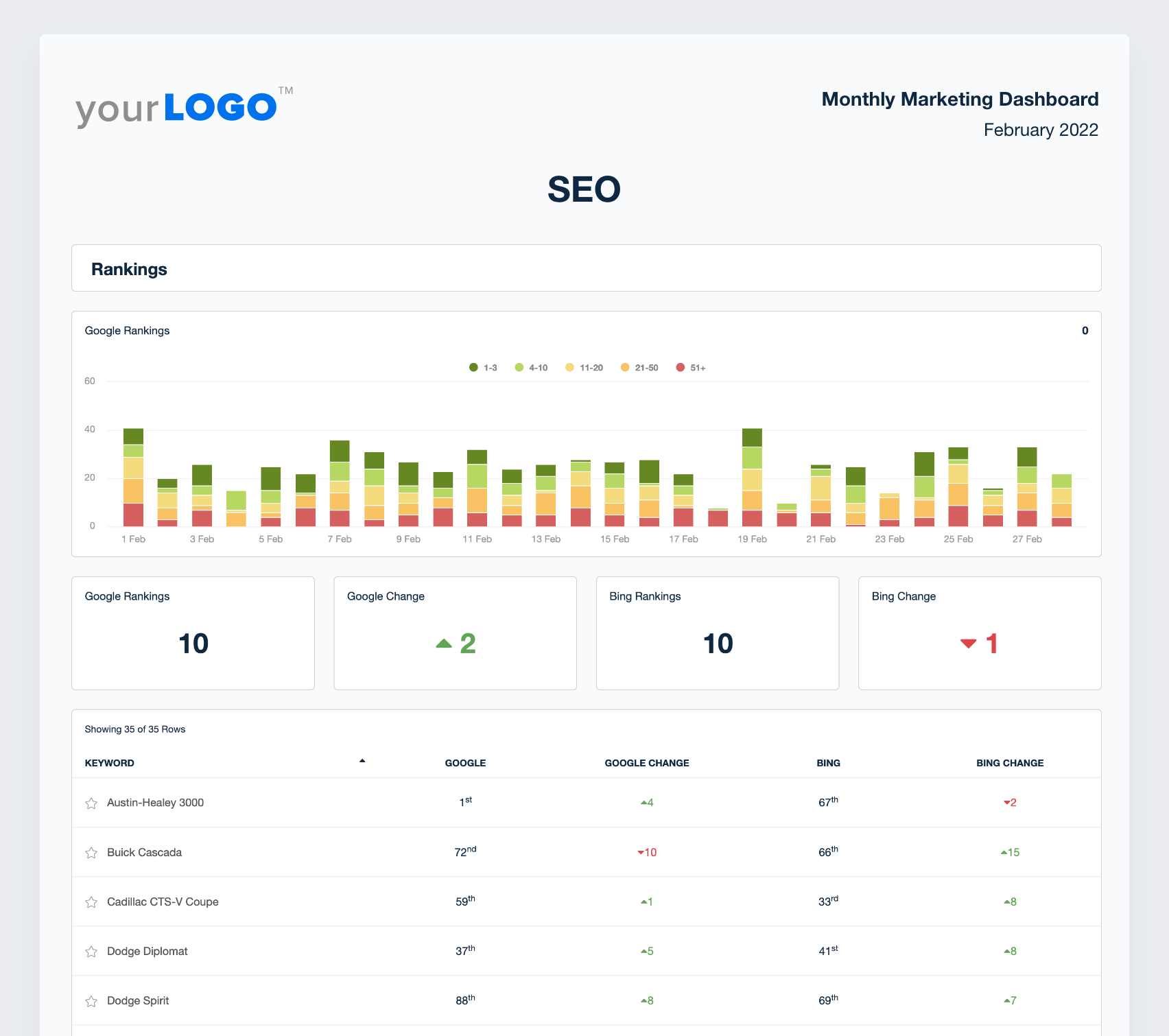
Use a professional SEO report template or a Local SEO Report Template to demonstrate the value your agency brings. Try AgencyAnalytics free for 14 days.
One of the most useful aspects of AgencyAnalytics is the combination of SEO tools to scale all those links and the ability to automate link building reporting by scheduling periodic reports or giving clients access to a 24/7 live dashboard.
2. Scrapebox
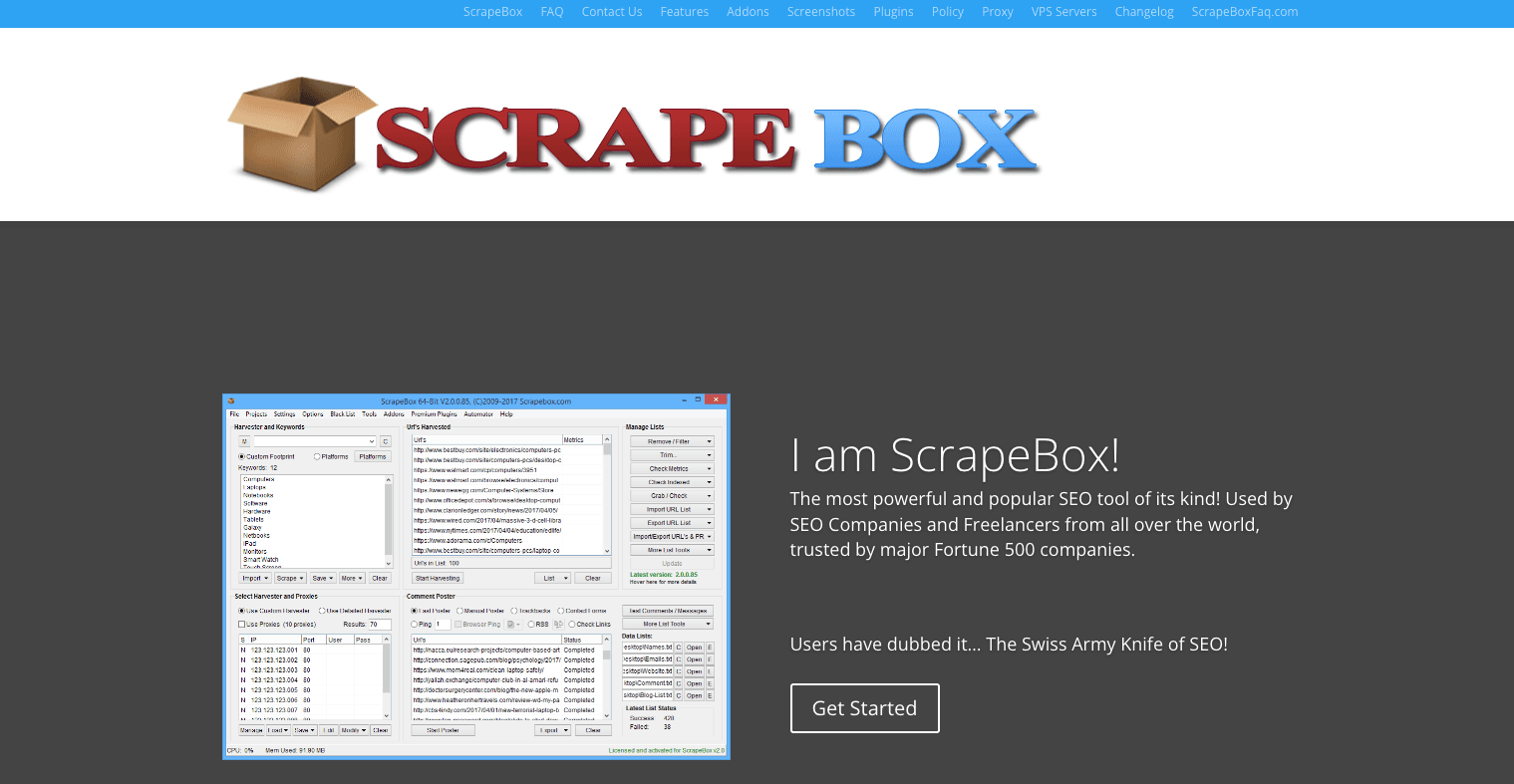
At one point, this tool was used to spam blog post comments. Now, savvy SEO agencies use it for many things. We’ll discuss more in detail about the benefits of this tool later on.
3. Pitchbox
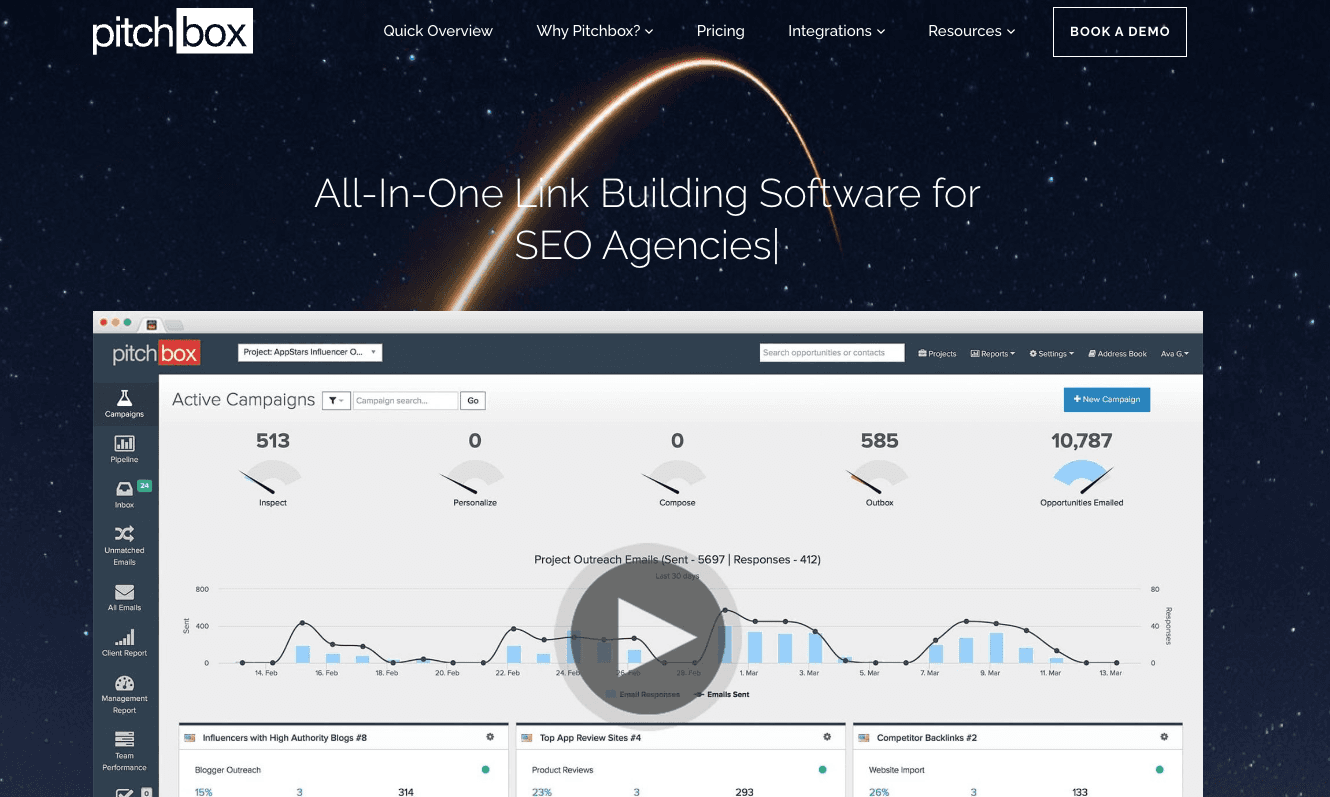
This influencer outreach platform is a great way to manage content marketing outreach due to its streamlined follow-up capabilities. Its integrated analytics and reporting tools offer real-time insights into campaign performance, making it easier to measure the effectiveness of link-building strategies.
4. Hunter.io
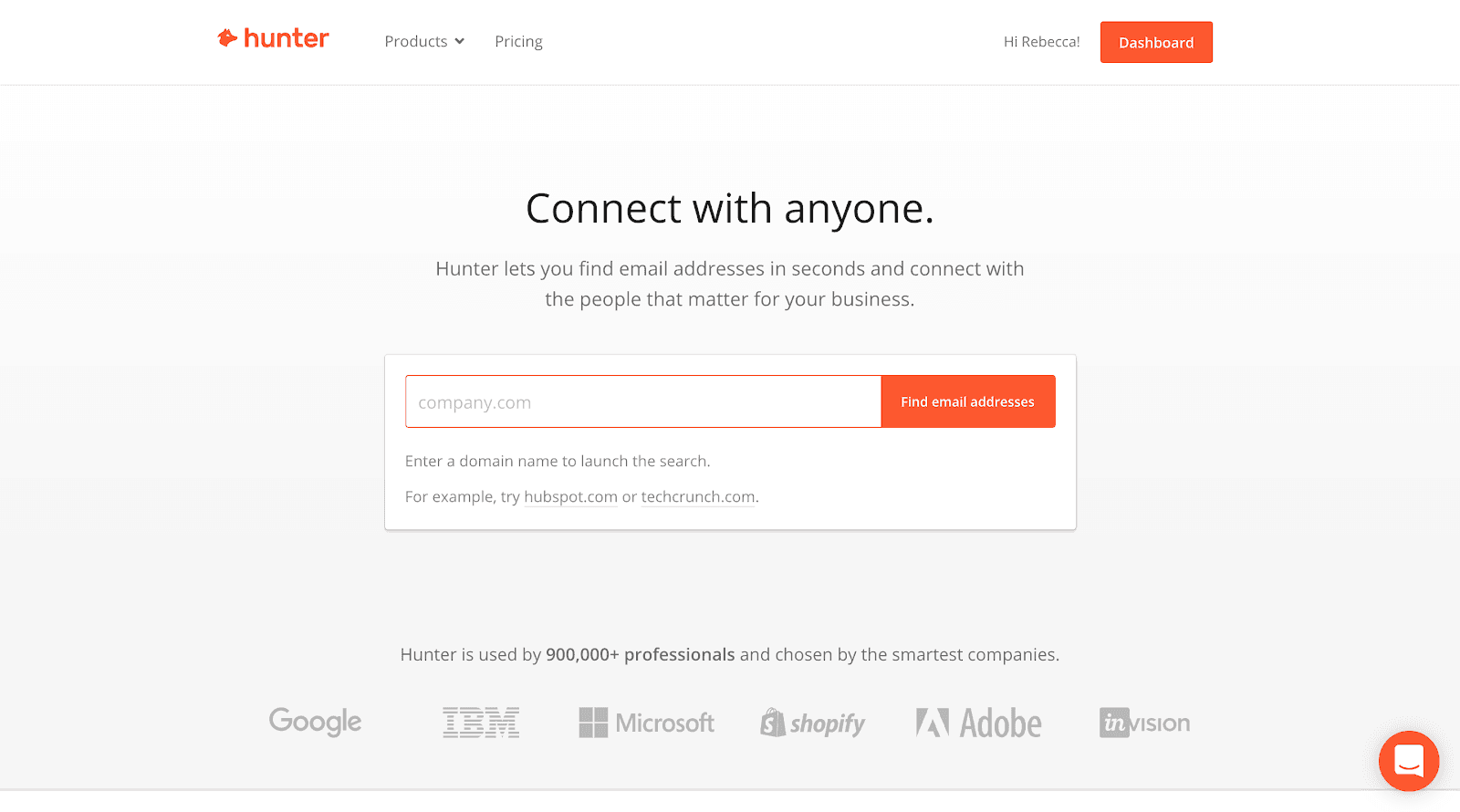
Hunter.io is another great option tool for agencies focusing on link building as it specializes in finding and verifying email addresses, streamlining the outreach process to potential link building partners. It gathers contact information from various domains, making outreach campaigns more efficient.
5. Majestic
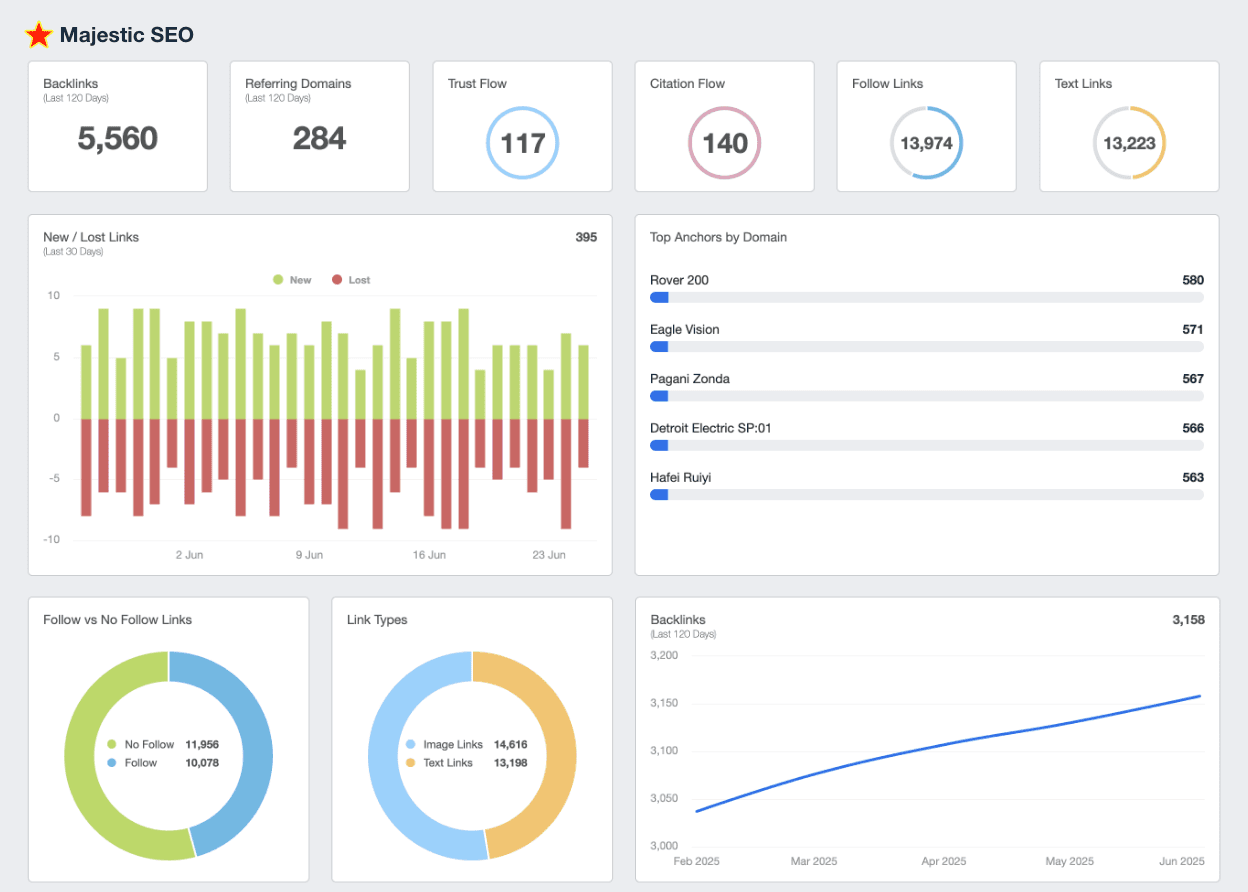
The Majestic integration offers extensive backlink data and domain analysis that helps in identifying high-quality link opportunities and monitoring existing backlinks. Its Trust Flow and Citation Flow metrics provide valuable insights into the quality and influence of linking domains, helping agencies prioritize valuable link-building targets and assess the impact of their links.
6. Ahrefs
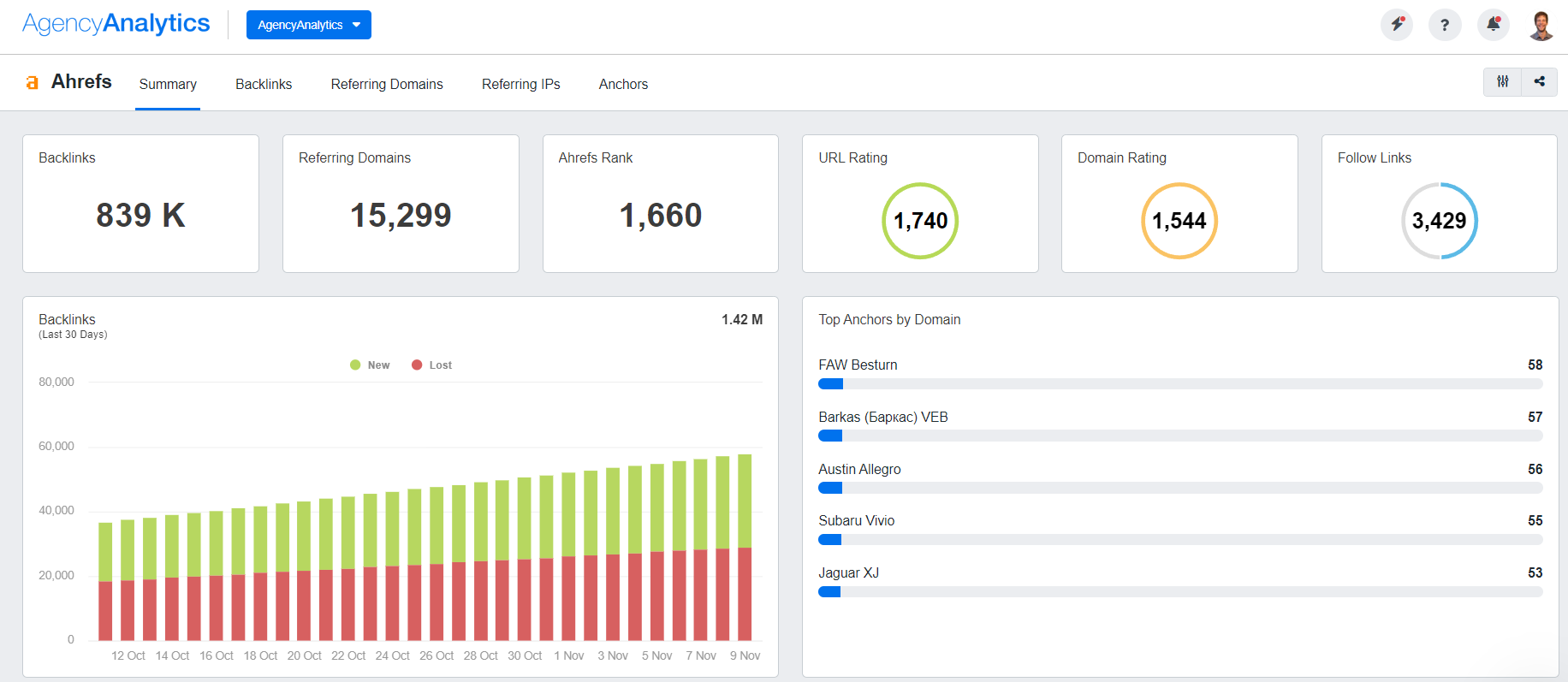
Ahrefs has a suite of features, including detailed backlink analysis, which helps in understanding the link profile of both the client's and competitors' websites. It provides data on link types, anchor texts, and the quality of referring domains, developing more effective link-building strategies. Read More: Pros & Cons of the Best Keyword Ranking Tools
7 Link Building Strategies To Scale
Now that we've covered a few of the top SEO tools, here are 7 tips to scale link building campaigns that boost a website’s authority.
Strategy #1: Develop a Solid Plan
Begin by thoroughly understanding the client's business, their competitors, and their target audience. Analyze what kind of content their audience values, what websites they frequent, and on what search engines.
Methods differ depending on the client. An eCommerce business can send products for review by online publications and acquire links this way, a home improvements business can request links from suppliers and reach out to relevant website owners; there's no one size fits all. The hardest and most valuable links are achieved through digital PR and journalist requests.
Andy Hill, Managing Director, Distribute Digital
Set clear objectives, like improving domain authority or increasing referral traffic, to guide their link building strategy. Frequently check in to determine if something like content creation or more technical SEO work is needed to build links for a particular client.
Strategy #2: Hacking HARO
Even if you’ve already been using HARO (Help a Reporter Out) and think this is the same old advice, hear us out. This is about SCALING the process to get authoritative links from Huffington Post, Entrepreneur.com, CIO, New York Times, INC, etc.
Your new client is most likely hiring you for a hands-off approach. They want their site to appear in search results but don't want to put any effort into it.
The problem is, they're the experts in their field! Most HARO queries are looking for the most journalists or experts, and let’s face it–your agency most likely doesn’t know anything about the intricacies of plumbing, plastic surgery, law firms, or the like.
There must be a better way!
There is—it's called Hacking HARO.
All you have to do is get freelancers to answer HARO queries on behalf of your client. Upwork is filled with freelancers who are specialists in different fields. Find doctors, lawyers, you name it.
At least 20 people typically apply to each job.

Start by creating a job title such as, "Need Industry Expert to answer questions.” Here is an example job description:
I’m looking for an industry expert to answer questions on a daily basis through HARO (Help a Report Out). You will get sent 3 emails a day with potential questions to answer. Sort through these questions and send responses to the given email.
We will pay you $10 per question you answer, plus a $10 bonus for getting featured on websites with your answers.
This is a quick and easy way to make some extra money every day. These questions do NOT take long to answer. Simply send a one or two-paragraph answer.
When answering the questions, you must put your position as an expert position and give a link to our website.
Now watch the applications fly in! Ask applicants to answer sample questions from HARO to test them and pick the best one.
From there, set up the new expert with a company email for the client. Also, set them up with a nice signature with their position (ex. In-House Nutritionist), something like this:
Register that email for HARO and give them an example email to run with:
Hi Reporter's Name,
Answer Question
My name's Expert's Name and I'm the Position at Company's Name. I'd really appreciate if you could link to Company's Website if you use my response. Thanks :)
Best,
Expert's Name
To get the best results, the expert should log in three times a day and answer as many questions as possible.
Typically, $10 per answer with a $10 bonus for getting a link posted has been sufficient motivation for in-depth answers.
The conversion rate from answer to link is around 20%, which results in high-quality editorial links for under $100. Worth considering.
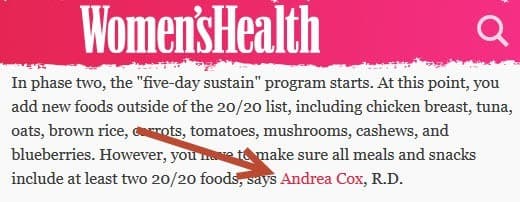
This is one way to secure great links that are otherwise unattainable or take a very long time. This is completely scalable and can be used for agencies or businesses of any size.
Strategy #3: Implement Inverted Broken Link Building
Broken link building is one of the most widely used tactics in the SEO world, and there's a reason for it–it works! And there is a way to maximize an agency’s efforts and take broken link building to the next level.
Ahrefs has a full guide titled, "inverted broken link building.” Here’s the breakdown of how it helps clients with broken link building:
Start by finding expired domains
Then, get their most linked to content through Majestic or Ahrefs
Replicate the quality content, and get the broken links replaced
We included Ahrefs in our list of 16 best link building tools, but if you want a step-by-step process, check out their methods here.
The only problem with their system is the prospecting aspect. Ahrefs advises searching through expireddomains.net one keyword at a time to find good opportunities. It takes a very long time to find a good prospect this way.
Instead, try using the TDNam Closeouts addon from Scrapebox. It scrapes the closeouts and regular auctions from GoDaddy.
Just add in the keyword list, let it work for a minute, and export the results:

Once you have a good-sized list of expired domains, insert up to 600 at a time through the Bulk Backlink checker in Majestic:
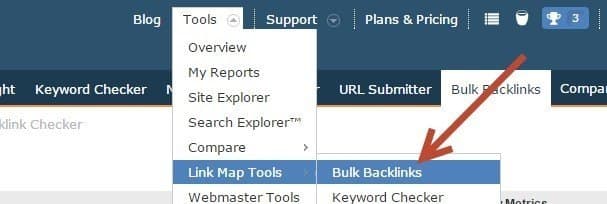
Poke through the top results and find thousands of juicy dead backlinks that need replacing. Easy!
Strategy #4: Leverage Freelancers to Guest Post
Similar to hacking HARO, this method is highly reliant on Upwork or another freelancing website. It works best with a linkable asset on the website, but it still works without one.
Post on Upwork asking for most people to write about the linkable asset (or business). Here is an example of a job description:
We're looking for business bloggers to cover our story. You either need to run a relevant blog or write for a relevant publication.
Simple! It works well because it gives the opportunity to screen all of the websites before paying them to post.
This has the potential to result in 40 people applying to the job, hiring five of them, and getting the website eight top-notch backlinks—all for less than $50 each.
Strategy #5: Use A Reputable Guest Post Service
There are plenty of sketchy guest posting services available. These emails are a daily common occurrence:

Yeah right.
Determining the legitimacy of a guest post outreach email requires a keen eye. Marketing agencies filter out the good from the bad by checking the sender's email domain for authenticity and researching the company or individual behind the email.
Look for specific details about their previous work, and ask for links to published articles. Genuine outreach will often include personalized messages that show familiarity with your agency's work, not generic greetings.
Be wary of emails demanding quick decisions or payment for posts, as these are red flags. Always prioritize emails that align with your agency's niche and audience for the most beneficial collaborations.
Strategy #6: Streamline Content Creation
Every SEO agency has heard about using tailored content to build links.
Here are 3 easy steps to follow when it comes to building links for clients:
Step 1: Create Linkable Assets
The first step is to create linkable assets. This involves crafting content that naturally attracts backlinks due to its value, relevance, and informativeness.
This includes comprehensive guides, infographics, original research, and tools that serve the target audience's needs and interests.
According to 44.6% of link builders, it takes an average of 1-3 months to detect influence of links on search rankings. So this is a strategy that may require some patience.
Step 2: Making Quality Content
There are many ways to get quality content made. There are in-house designers, some prefer 99 designs, choosing a designer on Upwork, or using Chat GPT.
However, keep in mind that the content should address a specific problem, provide a unique solution, or offer insights that aren't readily available elsewhere.
Promoting these assets through social media, email newsletters, and outreach to influencers in your industry amplifies visibility and encourages organic link growth.
Agency Tip: Create an outreach template to save your agency's time making connections for building links. Be sure to add one personalized element that can be swapped out from company to company.
The goal is to create resources that others find worthy of citing, enhancing a website's authority and search engine ranking.
Step 3: Scalable Outreach & Submission
Nobody will link to content that they haven't seen. The idea here is to create an outreach process that's quick and efficient. Break the outreach down into two buckets: low and high-value targets.
Low Value Outreach Targets
This is sort of a "spray and pray" method that has the potential to work well. This strategy aims at getting a huge list of potential targets and then emailing them.
Find websites using Scrapebox and then scrape emails from the websites. Use the footprint "intitle:infographic" along with the keywords to find websites that have shared infographics or similar types of content before.

Scrape a list of websites and "grab emails from URL list" to compile a big list of websites with matching emails. With the spray and pray method, it truly is a numbers game. A high number of emails will bounce, so it's important to build a BIG list.
After compiling a list of websites and emails, load them into a favorite outreach tool:
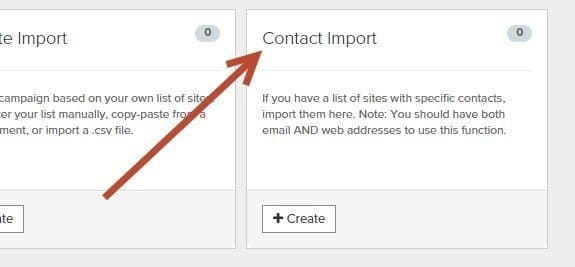
To start, send out a feeler email to see if they'd like to see the content but don't actually send a link yet—just a pleasant request to gauge their interest in seeing it.
If they respond, use the Guestographic technique and offer to give them a guest post to go along with the original content. Or, simply send them a link in hopes that they share it on social platforms.
Make sure to craft your outreach emails so that they are relevant and unique, or your risk getting list in a sea of like-minded link requests.
The hundreds of spam emails we get and IGNORE from low quality sites that sell backlinks. It's a part of the industry filled with spam, junk, low-quality, cheap offerings that are not just useless but actually harmful.
Andy Hill, Managing Director, Distribute Digital
Pitchbox works great for follow-up emails if someone doesn’t respond the first time around–by a whopping 65%!
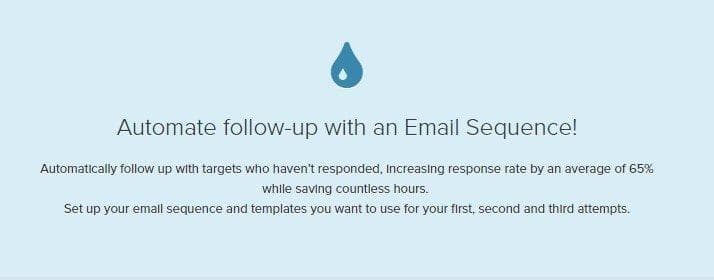
High-Value Outreach Targets
These are the sites that businesses definitely want to get links from. The big brands like Huffington Posts, CNN, Elite Daily, etc. Take some time to search for high-value websites that have recently posted similar types of great content.
You can quickly tank your authority score if you build poor quality links. We focus on high quality to add value.
Chris Wielinski, Owner, Think Cre8tive
From those articles take note of the first and last name of the author. Match them up with the website and put them through Hunter.io. Getting the email of the author and not the website's support email makes a world of difference.
After securing a nice list of high-value targets, load them into Pitchbox (or a different outreach tool of choice). Send them a friendly email appreciating the post, which included the piece of content, and offer another one that would be perfect for the site.
That's it!
If done properly, it should only take about 4-6 hours of hands-on time and should result in a number of high-quality links.
Strategy #7: Monitor Brand Mentions
Monitoring brand mentions is another great strategy to scale a link-building campaign because it’s like finding hidden gems scattered across the internet, including social media platforms!
We often find the old school methods can sometimes reap the best rewards. The number of clients we inherit who have had agencies spending so much time and resource on building backlinks but not monitoring broken backlinks or unlinked brand mentions.
Andy Robson, Agency Director, Squidgy
Marketing agencies use tools like Mention or SEO platforms like Ahrefs to track when their client’s brand is cited across the web. Identifying these mentions provides an opportunity to reach out to the content creators, thanking them for the mention and requesting the addition of a link to your client’s website.
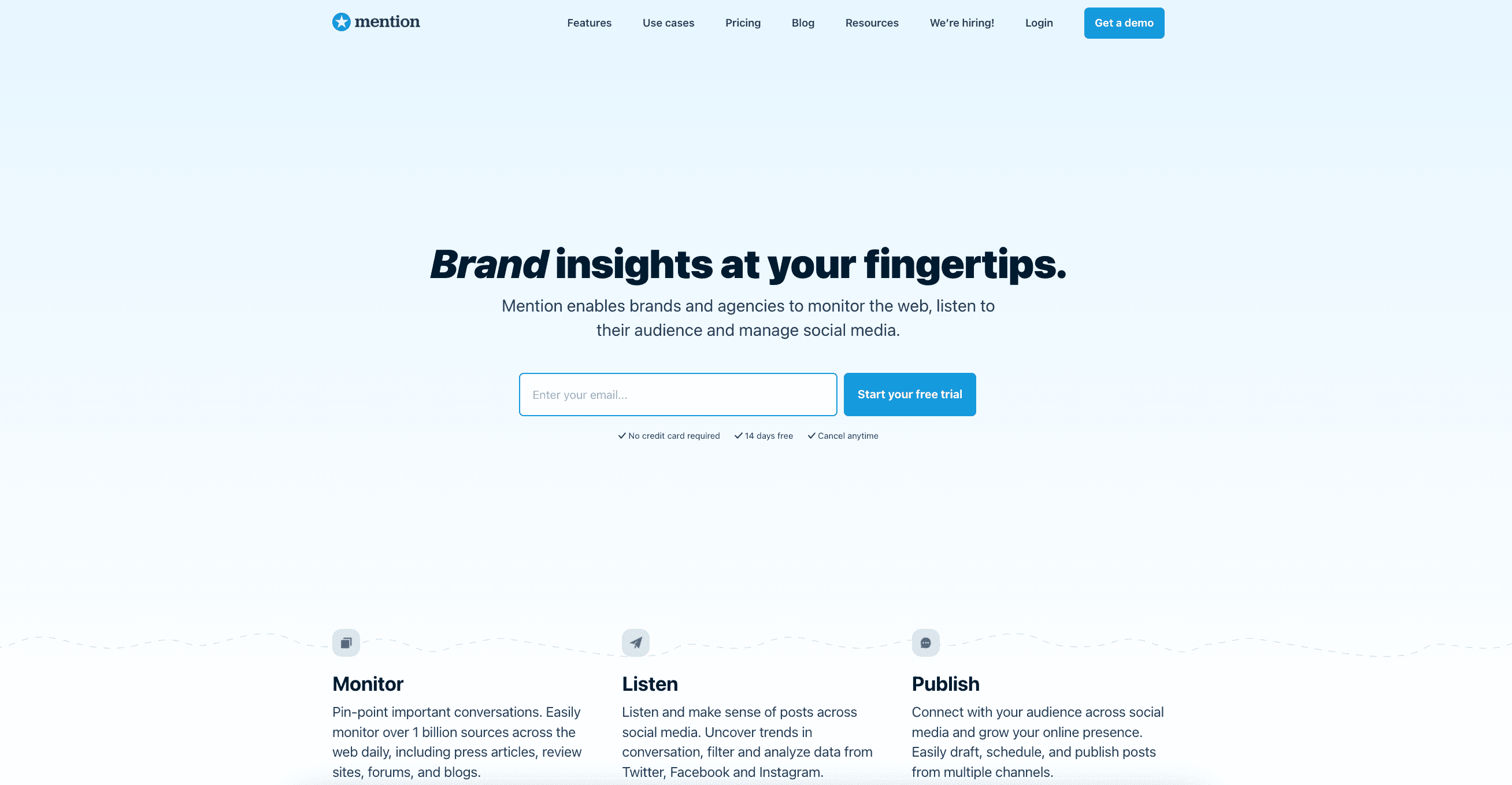
This approach aims to strengthen a backlink profile while building relationships with publishers and influencers in your client’s industry at the same time. Win-win! It's a direct, efficient method to convert existing mentions into quality backlinks, helping to boost a client’s overall SEO performance.
The Takeaway
Focusing on quality over quantity, leveraging strategic relationships, and utilizing a mixture of in-house and outsourced resources is the best way to expand any link building operation.
Cover the basics in a scaleable automated way (guest posts, pbns, directories etc) and then go above and beyond that with manual outreach to secure victory.
Jens Rhoades, Founder, Floodlight SEO
This strategic approach brings sustainable growth, improved Google search rankings, and a stronger online presence for clients. Don’t forget to continually evaluate and refine link building operations to stay ahead of ever-changing SEO practices to make the biggest impact.
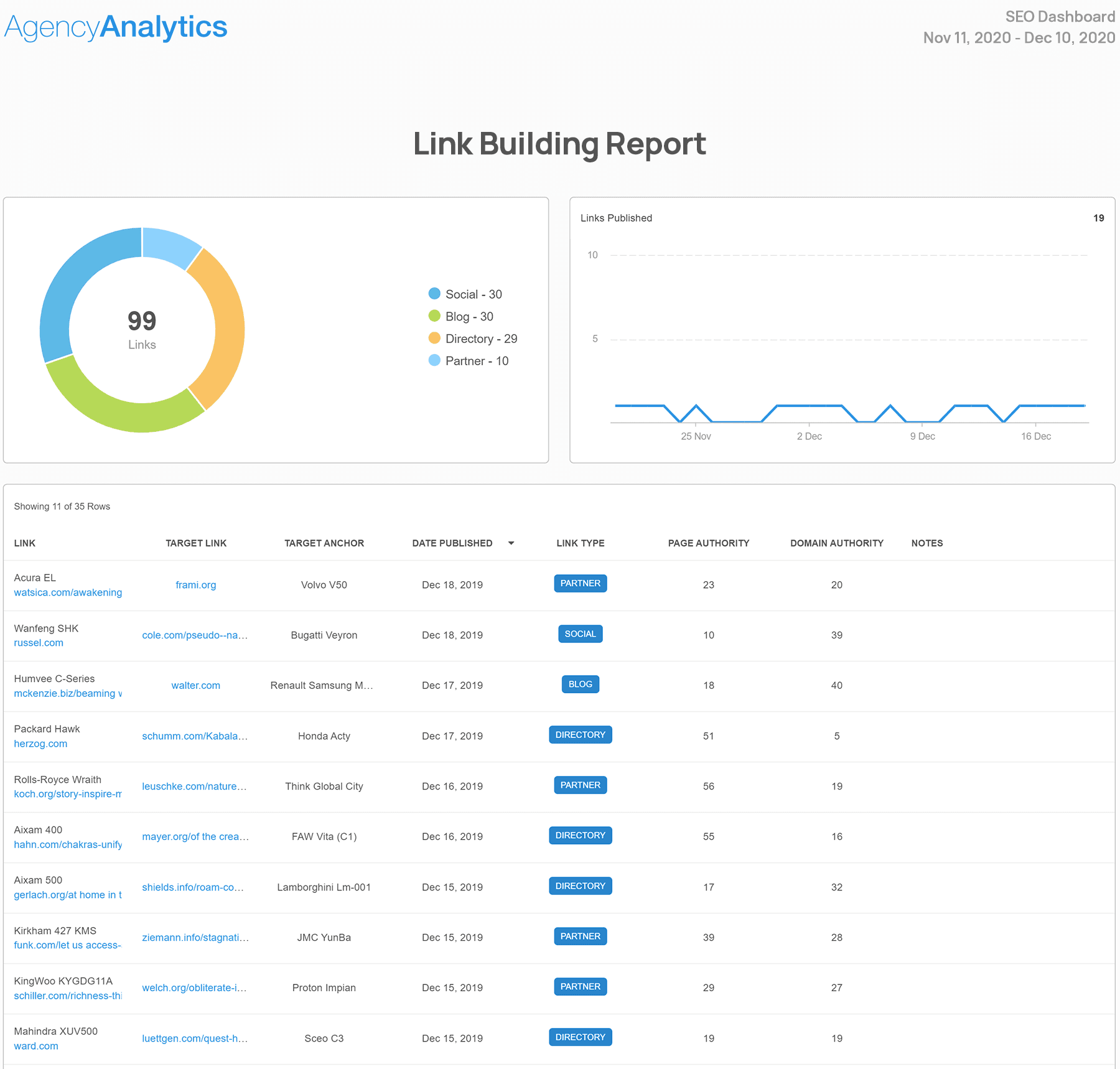
Ready to ramp up your link building strategy? Get this proactive link building report template to create easy-to-understand reports to communicate key SEO results. Start your 14-day free trial today!

Written by
Richelle Peace is a writer with a degree in Journalism who focuses on web content, blog posts, and social media. She enjoys learning about different topics and sharing that knowledge with others. When she isn’t writing, Richelle spends time teaching yoga, where she combines mindfulness, movement, and her passion for wellness.
Read more posts by Richelle PeaceSee how 7,000+ marketing agencies help clients win
Free 14-day trial. No credit card required.





